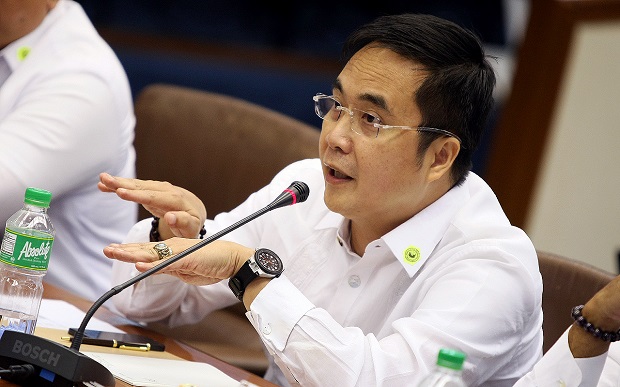MRT, LRT fares up starting Jan. 4
Metro Manila commuters will be greeted with higher railway fares this new year, with the Department of Transportation and Communications (DOTC) implementing a long-delayed fare hike on Jan. 4, 2015.
In a statement Saturday, the DOTC said it was implementing a 2011 fare hike structure calling for a base fare of P11 plus P1 per succeeding kilometer for the money-losing Light Rail Transit Line 1 (LRT 1), LRT Line 2 (LRT 2) and the oft-congested Metro Rail Transit Line 3 (MRT 3). The three lines serve over a million commuters daily.
Transportation Secretary Joseph Abaya said the move would raise “average fares for the average trip” by P5, still lower than bus fares for a comparable route.
“It’s a tough decision but it had to be made. It’s been several years since an increase was proposed. We delayed its implementation one last time until after the Christmas season. While 2015 will see increased fares, it will also see marked improvements in our LRT and MRT services,” Abaya said in the statement.
The objective was to reduce about P12 billion in subsidies by about P2 billion, money the government said would go to other social infrastructure and relief projects across the country. Despite this, the increase would likely draw criticism given the current state of railway lines, especially MRT 3, which has been suffering from long-queues and operational glitches.
A fare hike was also deemed “inevitable” as it was among the terms that the private sector was expecting when the P65-billion LRT 1 extension project to Cavite province was successfully auctioned off earlier this year.
Article continues after this advertisementDespite inflation and rising operational costs over the years, the last fare increase for LRT 1 was in 2003. LRT 2’s fares, on the other hand, have never been increased.
Article continues after this advertisementFor MRT 3, the fares were even lowered at one point. From the original range of P 17 to P 34 in 1999, fares were decreased to P 12 to P 20 in 2000. Currently, they range from P10 to P15.
The increase will take effect on Jan. 4, 2015, in line with the 2011-2016 Medium-Term Philippine Development Plan (PDP), the DOTC said.
The PDP directs the adoption of the so-called “user-pays” principle in the pricing of transportation services. At present, LRT and MRT operations are subsidized by the government at about P12 billion a year.
The DOTC noted that the government subsidizes around 60 percent of the cost for each LRT 1 and LRT 2 passenger and around 75 percent for each MRT 3 passenger. An estimated P2 billion will be freed up for development projects and relief operations in other parts of the country.
ìWe must emphasize that around P10 billion will still go to subsidizing LRT and MRT passengers. But the premise of the user-pays principle is this: If what each rider pays is closer to the actual cost of his or her own trip, the P2 billion savings can be used for development projects and relief operations to benefit those who never even get to use the LRT or MRT,î Abaya explained.
“I’m referring to the vast majority of Filipinos outside of Metro Manila—those in other parts of Luzon, in the Visayas and in Mindanao, most especially those whose lives have been severely affected by typhoons and calamities. They will be the real beneficiaries of a more equitable distribution of these savings,” he added.
The projected P2 billion savings is equivalent to 8,240 classrooms, 82 kilometers of farm-to-market roads or 11,440 hectares of irrigated farmlands, the DOTC noted.
RELATED STORIES
Gov’t: No MRT-3, LRT fare hike right now
